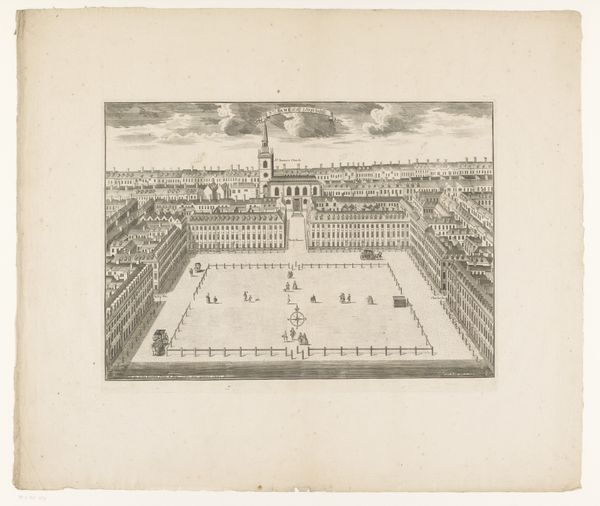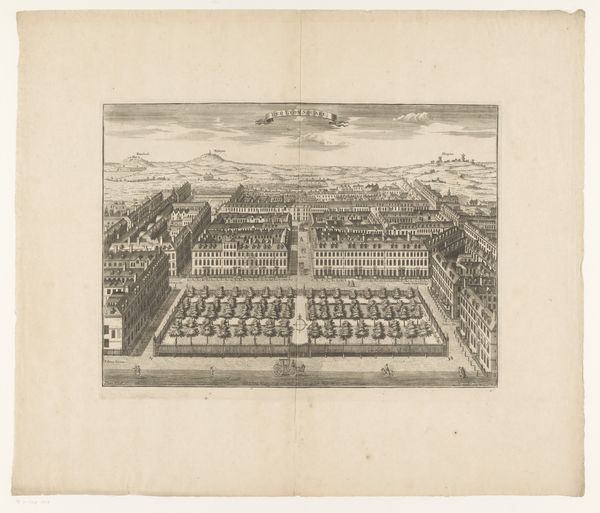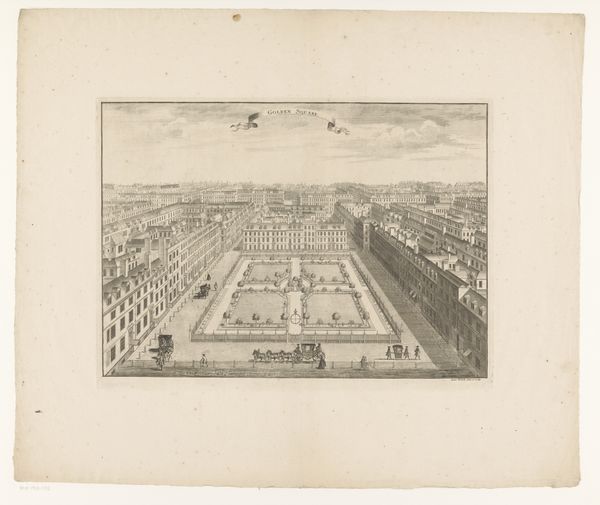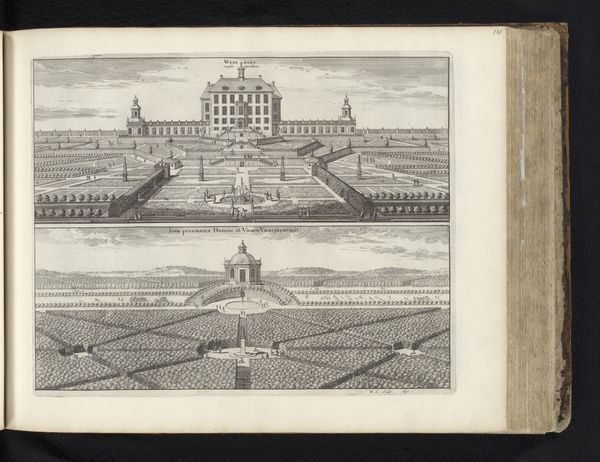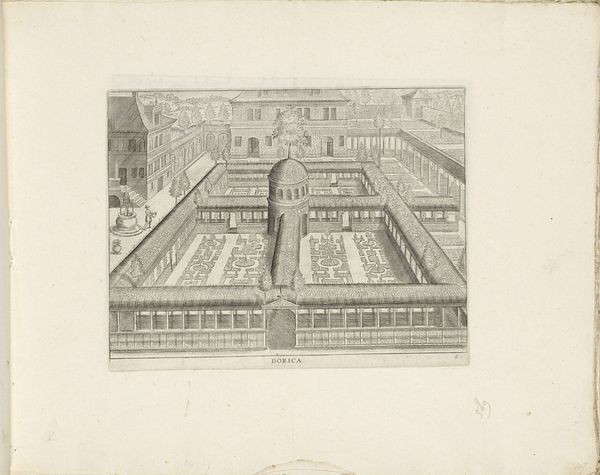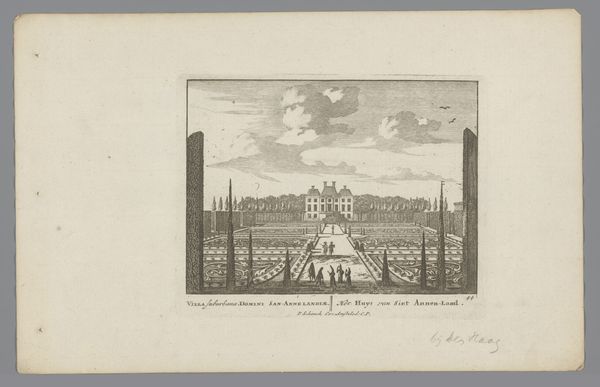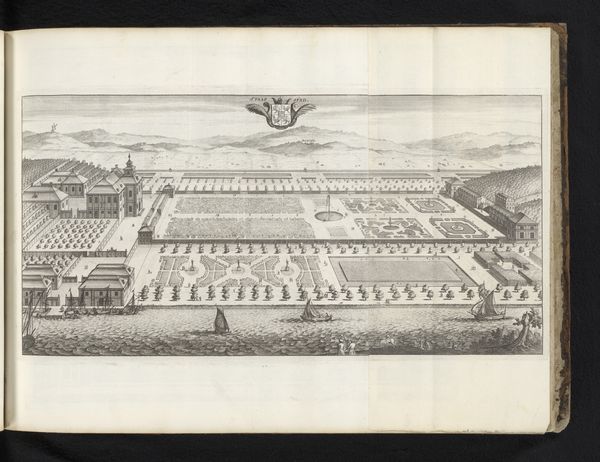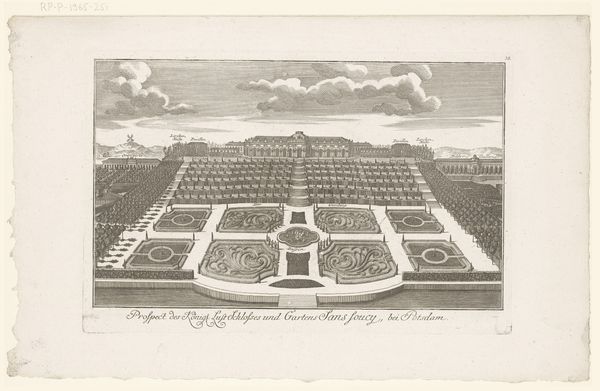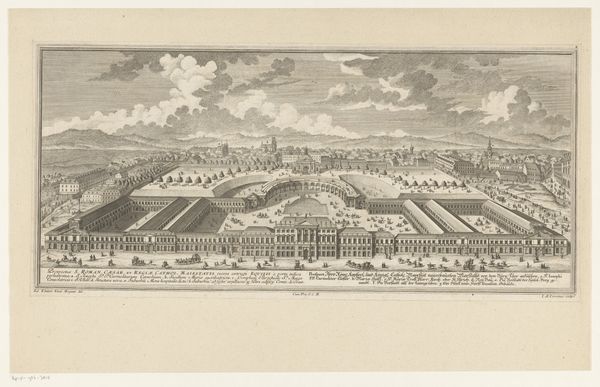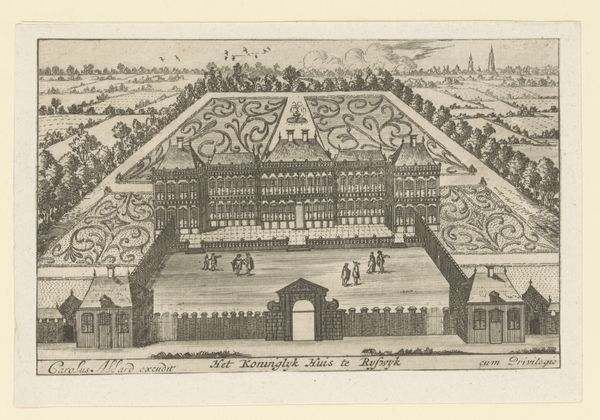
drawing, print, engraving
#
drawing
#
baroque
#
ink paper printed
# print
#
pencil sketch
#
old engraving style
#
perspective
#
pen-ink sketch
#
cityscape
#
engraving
Dimensions: height 343 mm, width 461 mm
Copyright: Rijks Museum: Open Domain
Sutton Nicholls created this print of Bloomsbury Square in London sometime between 1668 and 1729 using etching. This depiction of Bloomsbury Square offers a glimpse into the urban planning ideals and social hierarchies of 17th and 18th century London. Planned in the 1660s, Bloomsbury Square was intended as an exclusive residential area for the upper class, reflective of the era's rigid social stratification. The geometric layout and grand houses symbolized order and control, values prized by the elite. The open square itself, while seemingly public, was effectively a private garden for the residents, underscoring the limited access to resources and amenities for the lower classes. Nicholls' print invites us to consider the lived experiences of those within and outside this privileged space and to examine the power dynamics inherent in urban development.
Comments
No comments
Be the first to comment and join the conversation on the ultimate creative platform.
